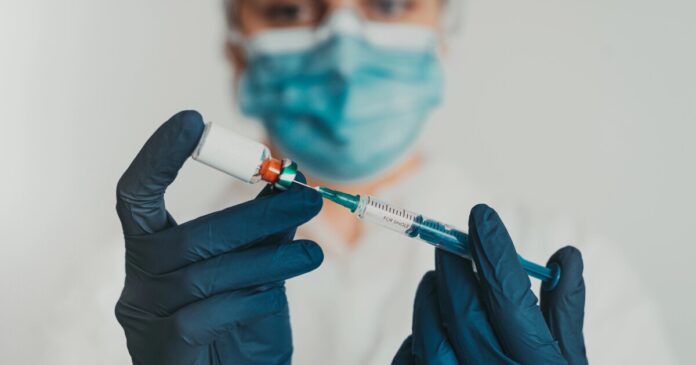Researchers at MIT have just developed a new lipid nanoparticle that super-enhances the effectiveness of the mRNA vaccine in mice to a hundred times its stand-alone effectiveness, thus offering massive savings by reducing required dosages while also reducing toxicity in the liver.
In their Nature Nanotechnology paper “Degradable cyclic amino alcohol ionizable lipids as vectors for potent influenza mRNA vaccines,” lead authors Arnab Rudra and Akash Gupta from the Koch Institute, MIT graduate student Kaelan Reed and colleagues explain that their nanoparticle-enhanced mRNA vaccine “significantly enhance[s] the potency of mRNA vaccines, and our structural insights may guide the development of next-generation vaccine delivery systems.”
In a press release, Gupta enthuses that his team’s new method works “much better than anything that has been reported so far. That’s why, for any intramuscular vaccines, we think that our [liquid nanoparticle] platforms could be used to develop vaccines for a number of diseases,” including COVID-19 and influenza.
How do mRNA vaccines work, and how do nanoparticles make them work better?
Unlike traditional vaccines, mRNA vaccines do not contain pieces of the pathogen they’re combatting. Instead, once placed into the cytosol of cells, the mRNA vaccine trains cells to create the proteins needed to fight, for instance, COVID-19 or influenza.
Standard mRNA vaccines used liquid nanoparticles (LNPs) to protect them from disintegrating inside the body, like the microscopic medi-nauts in Fantastic Voyage wore wetsuits (but imagine them made of fat) while swimming outside the Proteus micro-submarine.
Of the typical five ingredients in LNPs, ionizable lipids are particularly important for vaccine strength, and so the researchers created a catalogue of new ionizable lipids containing cyclic structures, which aid delivery of mRNA, and esters which may enhance biodegradability.
By testing these structures in a range of combinations, the researchers sought the best delivery mode for the bioluminescent gene luciferase (from the Latin prefix meaning “light-bearing” – and let us all hope the anti-vax crowd never hears that name). Combining it with their most effective particle, AMG1541, they devised and tested a catalogue of new variants.
The result is their nanoparticle-enhanced mRNA vaccine that, unit-per-unit, does the work of a hundred times as much of the FDA-approved ionizable lipid SM-102. Even better, lower dosages also “substantially reduced expression in the liver following intramuscular injection, mitigating the associated toxicity.”
Because mRNA vaccines are so expensive, any safe way to reduce the cost of producing them has the potential to benefit countless patients who would otherwise needlessly suffer. By increasing potency and thus reducing cost per dosage, nanoparticle-enhanced-mRNA vaccines (which I’ll urge the authors to call NEMRNAVs, because saying “nemmer-navs” is way, way faster than saying “nanoparticle-enhanced-mRNA vaccines”) may become an inexpensive way to combat COVID-19 and many other infectious diseases.
A further benefit is that NEMRNAVs (my trademark pending) “could allow vaccine developers to better match the strains of flu that circulate each winter.” Co-author Reed notes that the familiar process of flu vaccine production begins a year before each annual flu season, but by using mRNA, “you can start producing it much later in the season and get a more accurate guess of what the circulating strains are going to be, and it may help improve the efficacy of flu vaccines.”
Source: MIT


